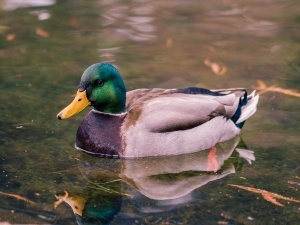
The crop is an important part of a bird’s body, if this organ starts malfunctioning then the bird will start to develop issues with eating and can even die if not addressed.
If your duck’s crop is swollen you’d be right to be worried. This article explores why your duck has a swollen crop.
Table of Contents
Duck swollen crop:
The crop of your duck should be flat for the most part only expanding in some cases and not for too long at that. Here are reasons why your bird has a swollen crop and what to do:
The bird just ate:
A bird that’s crop is swollen may have simply just eaten. The crop is an organ that stores food before the food is taken into the bird’s stomach. This allows the bird to eat quickly but be able to digest the food slowly
What to do:
Keep an eye on the bird and take note of when the crop extends and deflates. If in the morning the bird’s crop is deflated and inflates after the bird eats then this crop expansion happened because the bird just ate.
The bird’s crop should deflate throughout the day and will be completely flat by the time the bird wakes up the next day
Blocked crop:
Your duck can develop a blocked crop if it eats a large object that can’t be passed by its crop
Ducks may eat a variety of things that they shouldn’t, the bird may have eaten a large stone or another type of object.
A bird in this scenario may still be eating and drinking normally and the bird’s crop may be increasing and decreasing in size somewhat but the crop won’t fully deflate because of the object in the crop.
What to do:
Start off by feeling your bird’s crop to see if there is a blockage in the bird’s crop. Do this before the bird starts to eat in the morning. If the object is hard and or has an odd shape then this is likely what happened to your bird
If the object is too large then it likely can’t be removed at home, and the bird will likely need surgery to get the object out, this requires taking the bird to the vet or to a wildlife rehabilitation center.
The vet or the professionals at the center will likely take an x-ray of the bird to confirm that there is an object stuck in the bird’s crop. They will then carefully remove the object during surgery
Impacted crop:
An impacted crop is similar to a blocked crop in that there is something blocking the crop but the material that is blocking the crop is different.
If your bird eats long grasses, many small stones, or plastic then these foreign objects will bind to the feed in the bird’s crop and cause a blockage causing the bird to develop an impacted crop.
The crop will be filled and this can keep any foods that the bird eats from being able to pass the crop into the rest of the bird’s body,
What to do:
Feel the bird’s crop and check to see if the bird’s crop is mushy and soft as though long grass or plastic is stuck in the crop or if one large hard object, like a stone, is stuck in the crop.
If the crop is blocked by a mushy mass then the bird likely has an impacted crop which can usually be treated at home.
If you find that your bird has an impacted crop then you’d need to isolate the bird and give it 10 ml of warm oil and then massage the crop to try to break up the blockage.
You may need to massage the bird’s crop several times every couple of hours.
If the massaging is not successful then you may need to take the bird to the vet to have the mass surgically removed.
Slow crop:
If your bird’s crop extends but deflates very slowly compared to the other birds then your bird may have slow crop.
Slow crop develops when a bird becomes infected with an ailment like liver disease, diabetes, lead poisoning, kidney disease, or hardware disease.
A bird with this condition will still have a fully working crop but the food will simply take longer to move down
What to do:
Keep an eye on the bird to see if the crop eventually deflates or not. The bird’s crop needs to be able to fully deflate in order for the bird to be able to live normally and to keep the food from rotting in the crop
If the crop doesn’t deflate before the bird eats again then you’d need to get the bird to the vet to treat the underlying illness. The bird’s crop should go back to working normally after this.
If you enjoyed this article then you may also be interested in other duck related articles. Here are some articles that you may be interested in: Duck Chest Swollen, Why Is My Duck Attacking Me?, Duck With Lump On Head, Introducing Geese To Chickens

